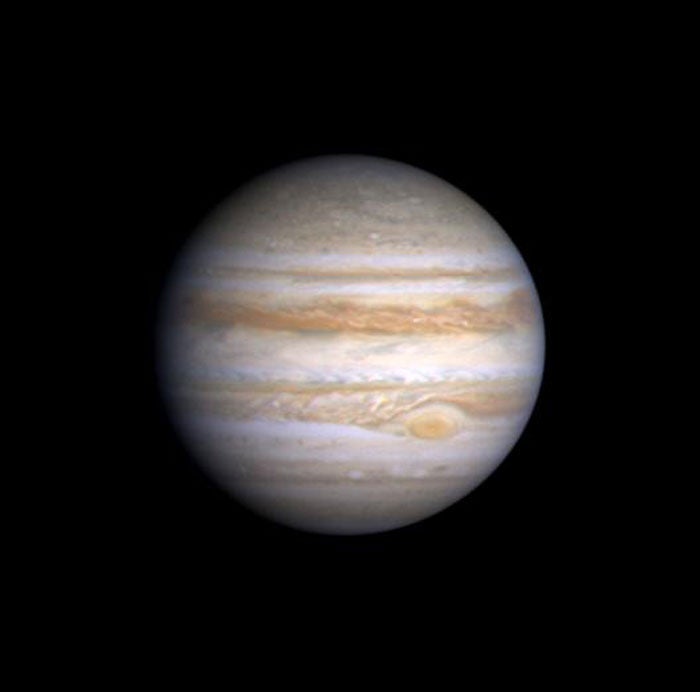Q: Do the gas giant planets have discernible surfaces? If so, would they support objects?
A: Gas giants like Jupiter and Saturn do not have solid surfaces in the sense that if you dropped in a penny, it would never land with a “clink.” These bodies are mostly composed of hydrogen at temperatures above the “critical point” for hydrogen, meaning there is no sharp boundary between solid, liquid, and gas regions.
But gas giants do have layers. For example, if you could somehow endure the high temperatures, pressures, and radiation levels and survive a dive into Jupiter, you would first swim through a stormy atmosphere of hydrogen. You would pass through layers of ammonia clouds, sulfide clouds, and then water clouds. You would probably even begin to float when the density of the gas around you matched that of your body.
But if you could weigh yourself down, you could keep sinking and enter a thick layer of metallic hydrogen, where electrons and protons move separately from one another. The temperature would get hotter and hotter as you kept diving — up to about 20,000 kelvins (35,000° Fahrenheit).
Finally, in Jupiter’s core, the metallic hydrogen would give way to heavier elements like silicon and iron. Here, your body, crushed to 1/25 its size and stripped of most of its electrons, would probably rest forever.
NASA’s Goddard Space Flight Center, Greenbelt, Maryland










